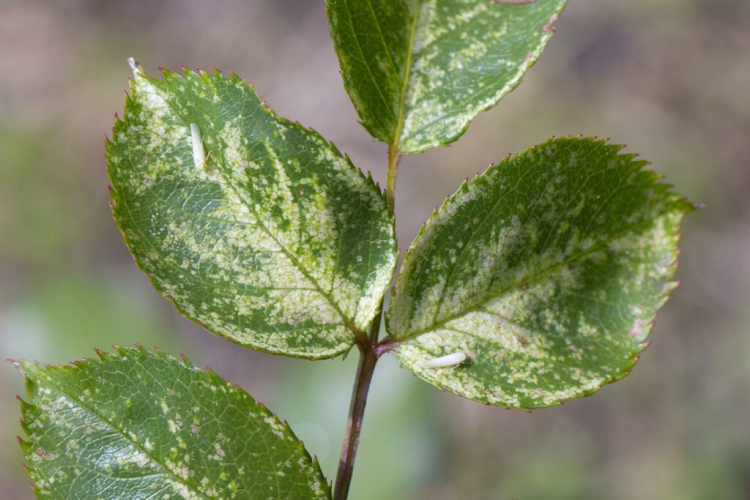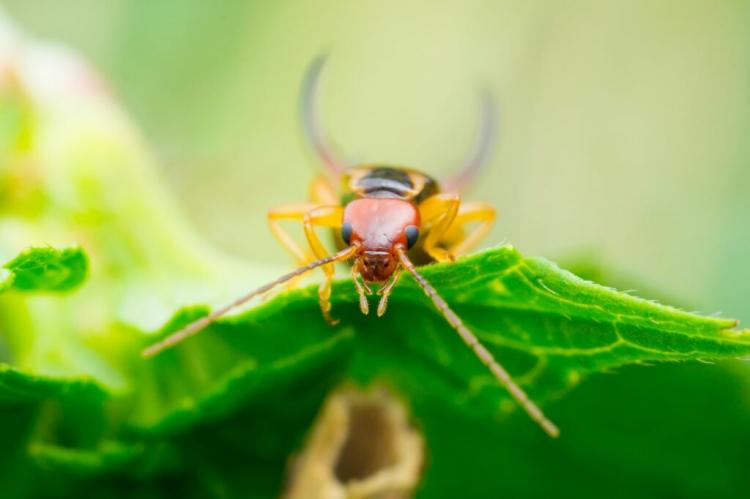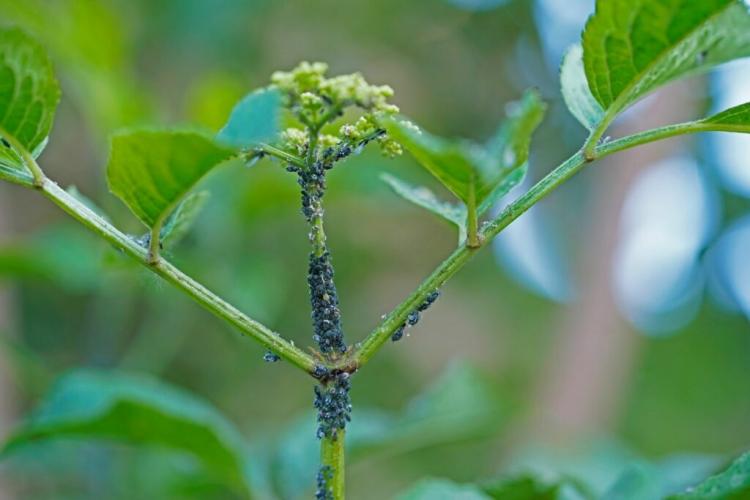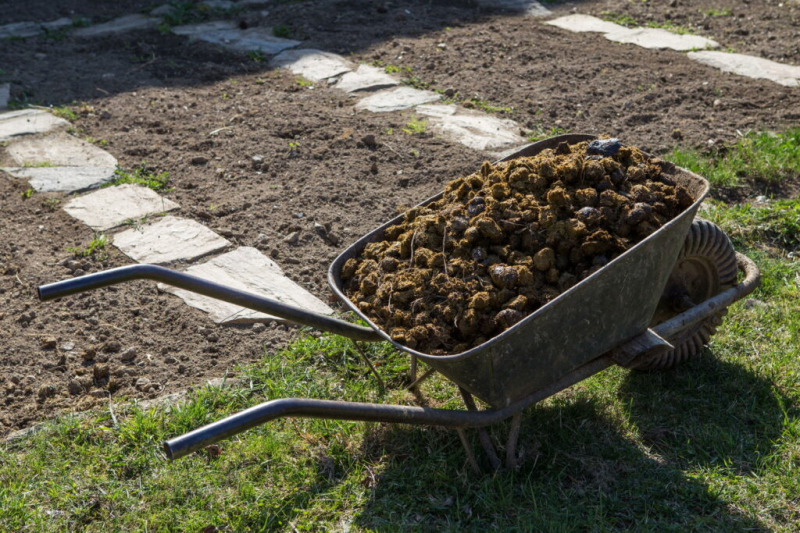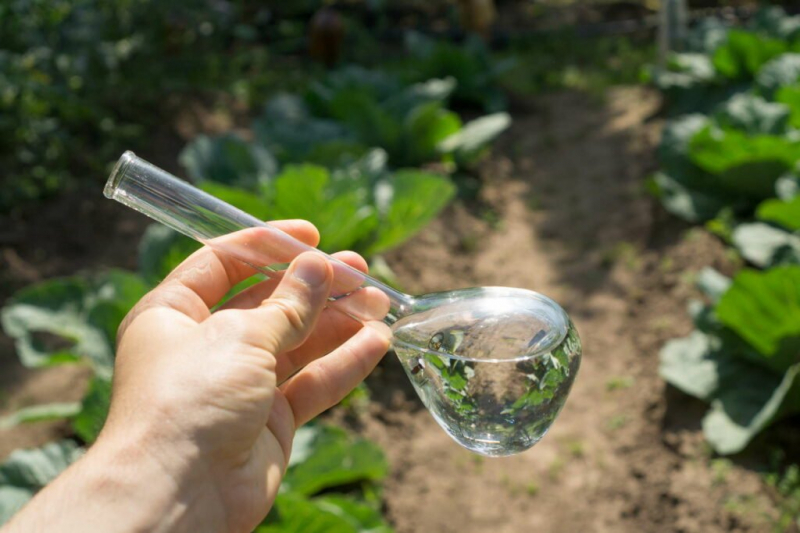Rose Leafhoppers: Everything You Need To Combat The Pest Naturally
Cicadas are not good for our roses. We reveal how to recognize the pests and how to fight rose leafhoppers naturally. Are you wondering why some of the leaves of your roses show an unusual pattern of light, small spots that eventually merge into white areas? Rose leafhoppers ( Edwardsiana rosae ) leave such patterns when they attack roses. We will show you how you can recognize an infestation and fight it naturally.
How to recognize cicadas on roses
The rose leafhopper itself is an elongated insect about three millimeters in size that is white to yellowish-green in color. Rose leaf hoppers usually sit on the underside of the leaves and are therefore difficult to see. They pierce individual cells of the leaves and suck them out. These sucked-out cells fill with air and then appear white on the leaf surface.
This is why many small white spots appear on the top of the leaf on rose petals that have been infected by the rose leafhoppers. This is the best way to recognize cicadas on roses. The sharp edges of these small points or surfaces are characteristic. Initially, the spots are mainly seen on the leaf veins and then spread over the leaf.
An infestation by spider mites ( Tetranychidae ) can cause similar symptoms, but the webs typical of spider mites are missing in a cicada infestation. In addition, the adult cicadas jump away when touching the infected leaf, which is also a good differentiation from a spider mite infestation. Larval skins of the cicada larvae on the underside of the leaf also help to identify a cicada infestation.
If the infestation is severe, the leaves dry up and fall off prematurely. Rose leaf hoppers occur mainly in sunny and dry locations from May onwards.
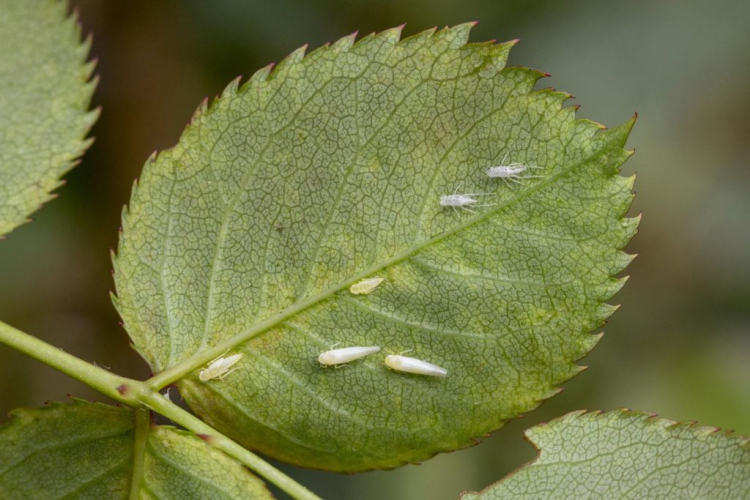
So you can fight rose leafhoppers of course
Often an infestation by the rose leafhopper is not noticed. Unfortunately, the animal transmits the rose mosaic virus by suckling on different plants. This virus also weakens your rose after the leafhoppers disappear, which is why fighting the rose leafhoppers is recommended. In the case of a slight infestation by rose leafhoppers, a nettle brew can be used, the preparation of which we explain in our article on home remedies against aphids.
You might so like: Roses In Pot: Caring And Planting A Rose In A Pot
If the stinging nettle brew did not help, you should fight the infestation more effectively. Synthetic and biological pesticides are available on the market for this purpose. Synthetic agents use different active ingredients: acetamiprid, fenpyroximate, and flupyradifuron for example. It is not uncommon for them to be offered in conjunction with oils such as rapeseed oil in order to further improve the effect.
Some bio-agents are based on pyrethrins. These are isolated from chrysanthemums, but their origin says nothing about their harmfulness: Pyrethrins are extremely toxic to beneficial insects and aquatic organisms. In order to protect beneficial insects and the environment from synthetic and natural poisons, we recommend that you combat rose leafhopper in your home garden with gentler means.
Preparations based on neem are particularly effective and environmentally friendly in combating rose leafhoppers. Neem preparations are made from the seeds of the neem tree and the active ingredient azadirachtin is absorbed by the cicadas when they suckle. The small insects lose their appetite within a few hours. In addition, the development of the larvae is disturbed, which is why ultimately all generations of cicadas on the plant are damaged and perish. The Organic pest-free neem uses the active ingredient azadirachtin from the neem tree and enables you to effectively combat rose leafhoppers as gently as possible.
Organic pest-free neem is mixed with water to create an oil-water suspension. This can then be sprayed onto the infected rose with a spray bottle. Just 0.3 milliliters of organic pest-free neem mixed with 200 milliliters of water are sufficient to treat one square meter. Since the cicadas sit on the underside of the leaves, you should make sure to wet the leaves from below as well.
You might so like: English Roses: The 15 Most Popular And Beautiful Varieties
Even so, the cicadas are often difficult to hit with a spray bottle. Organic pest-free neem is absorbed by the plant and is systemically distributed in all organs. This is how you can also fight hidden cicadas. Organic pest-free neem, on the other hand, is not dangerous for bees that are attracted by the flowers of the roses.
You May Also Like Neem Oil Is Safe For Cats
In order to prevent future infestation, we recommend that you ensure that your roses have a balanced supply of nutrients in order to optimally maintain their resistance to pests. Special rose fertilizer – like organic rose fertilizer – helps you to optimally care for your roses. In addition, pruning the rose in spring will reduce the number of eggs that have overwintered in the bark and will also help you preventively. You can also learn how to cut roses correctly from us.
Summary: Fight rose leafhoppers naturally
- Nettle stock helps with a slight infestation
- Biological pesticides such as neem preparations are recommended for severe infestation
- Prevention through a good supply of nutrients and pruning in spring
With these tips, you have the best conditions to fight the rose leafhopper naturally. In our special article on roses, you will find more exciting tips for caring for your roses. This way, you can enjoy your roses in full bloom.
